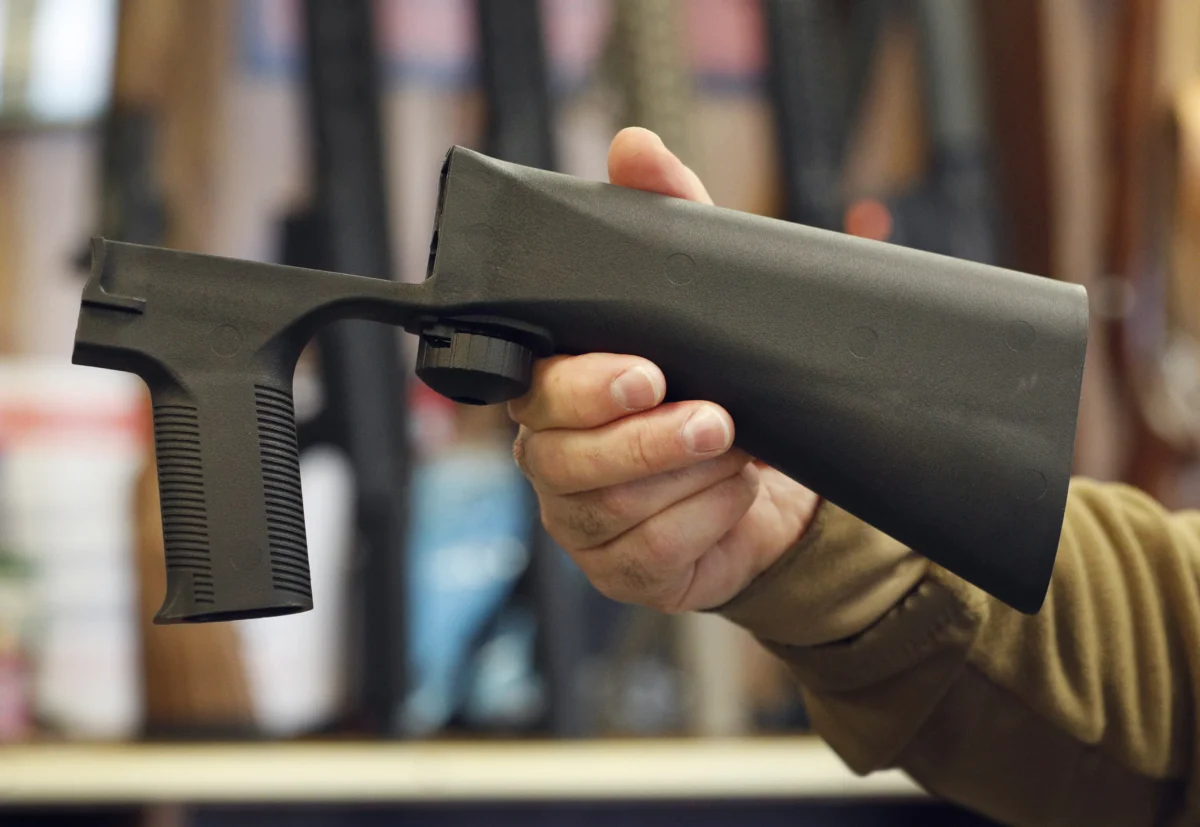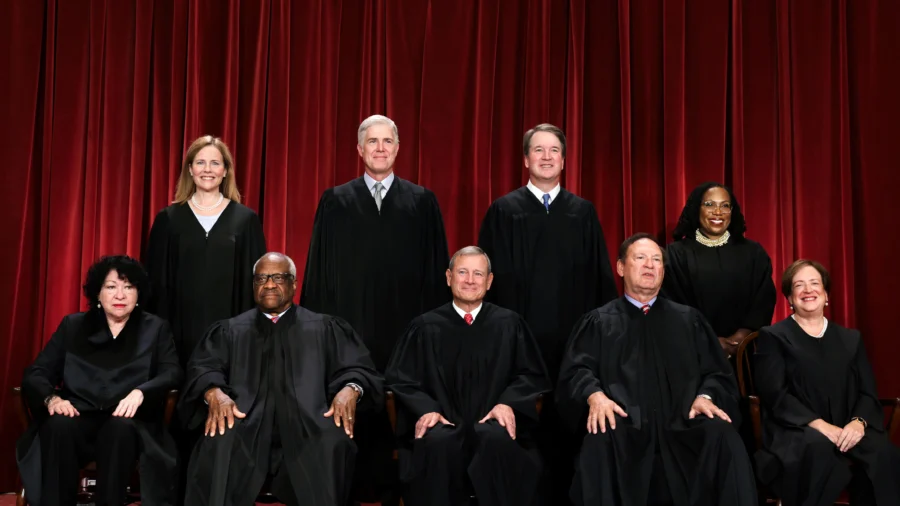The U.S. Supreme Court on Friday agreed to take up a case involving the Trump-era ban on “bump stocks” that was initiated in the wake of the Las Vegas mass shooting.
The justices agreed to hear arguments early next year over the Bureau of Alcohol, Tobacco, Firearms, and Explosives (ATF) rule, which was implemented in 2017. The case pertains to whether the Department of Justice, which oversees the ATF, followed federal law in changing the regulation around bump stocks, which are able to increase the rate of fire in some semiautomatic weapons.
Federal appeals courts have come to different decisions on whether the ATF regulation defining a bump stock as a machine gun accords with federal law. In 2010, under the Obama administration, the agency found that a bump stock should not be classified as a machine gun and therefore should not be banned under federal law.
A 1986 federal law prohibits Americans from owning fully automatic weapons or parts that are used to convert other firearms into automatic weapons, although some exceptions were made to fully automatic firearms produced before May 1986. The ATF in 2018 said that bump stocks fall under the regulation of the 1986 law.
The ATF policy went into effect in 2019 after the U.S. Supreme Court declined to issue an order to block it. In October 2022, the U.S. high court turned away two previous cases brought by gun rights advocates challenging the ban.
Opponents of the bump stock ban said that the legal definition of a machine gun has been distorted and argue that courts shouldn’t defer to the ATF’s interpretation of the rule. They have also argued that an individual needs to lean in and apply pressure to the stock of a gun fitted with a bump stock to get it to work, differing from how an automatic weapon, such as a machine gun, works.
A bump stock uses the kickback from a semi-automatic weapon to increase the rate of fire.

The full U.S. 5th Circuit Court of Appeals ruled 13–3 in January that Congress would have to change federal law to ban bump stocks. “The definition of ‘machinegun’ as set forth in the National Firearms Act and Gun Control Act does not apply to bump stocks,” Judge Jennifer Walker Elrod wrote for the 5th Circuit. Meanwhile, the Cincinnati-based 6th U.S. Circuit Court of Appeals ruled that the ban on the devices is unlawful.
“But even if we are wrong, the statute is at least ambiguous in this regard,” the 5th Circuit Court also wrote in its decision. “And if the statute is ambiguous, Congress must cure that ambiguity, not the federal courts.”
But a panel of three judges on the federal appeals court in Washington looked at the same language and came to a different conclusion.
Judge Robert Wilkins wrote for the U.S. Court of Appeals for the District of Columbia Circuit that “under the best interpretation of the statute, a bump stock is a self-regulating mechanism that allows a shooter to shoot more than one shot through a single pull of the trigger. As such, it is a machine gun under the National Firearms Act and Gun Control Act.”
Lawyers for the DOJ, in court papers filed with the Supreme Court, argue that the federal rule did not “enlarge the scope of the statutory prohibition” on transferring newly made machineguns.
“The rule instead merely served to inform the public of ATF’s considered view that bump stocks are ‘machineguns’ as Congress defined that term,” the DOJ said.
Federal officials have estimated that as many as 520,000 bump stocks were sold nationwide before owners were ordered by the DOJ to surrender them under the ATF rule.
A number of gun-control groups including the Giffords Law Center Everytown for Gun Safety have also urged the Supreme Court to uphold the ATF bump stock ban.
The underlying lawsuit was filed by a firearms owner, Michael Cargill, who had to surrender two of his bump stocks to comply with the federal rule.
His attorneys have contended the bump stocks cannot be classified as machine guns, saying the DOJ is “overlooking the considerable human input required to fire more than one shot from a bump-stock-equipped semi-automatic rifle.”
“[T]he meaning of ‘machinegun’ in section 5845(b) is an issue on which national uniformity is needed; it is not tenable to have a regime in which the sale and possession of bump stocks are outlawed in some circuits while permitted in others,” Mr. Cargill’s attorneys wrote in court filings to the Supreme Court.
A decision on the case is expected to be rendered by the top court in the early summer.
The Supreme Court already is weighing a challenge to another federal law that seeks to keep guns away from people under domestic violence restraining orders, a case that stems from the landmark gun rights decision in 2022 in which the six-justice majority expanded gun rights outside the home.
In another gun-related case, the Supreme Court on Friday also agreed to review a lawsuit brought by the National Rifle Association (NRA) that alleges a former New York firearms regulator of infringing on the pro-Second Amendment group’s rights by trying to discourage insurers and banks from working with the organization.
The Associated Press contributed to this report.
From The Epoch Times


